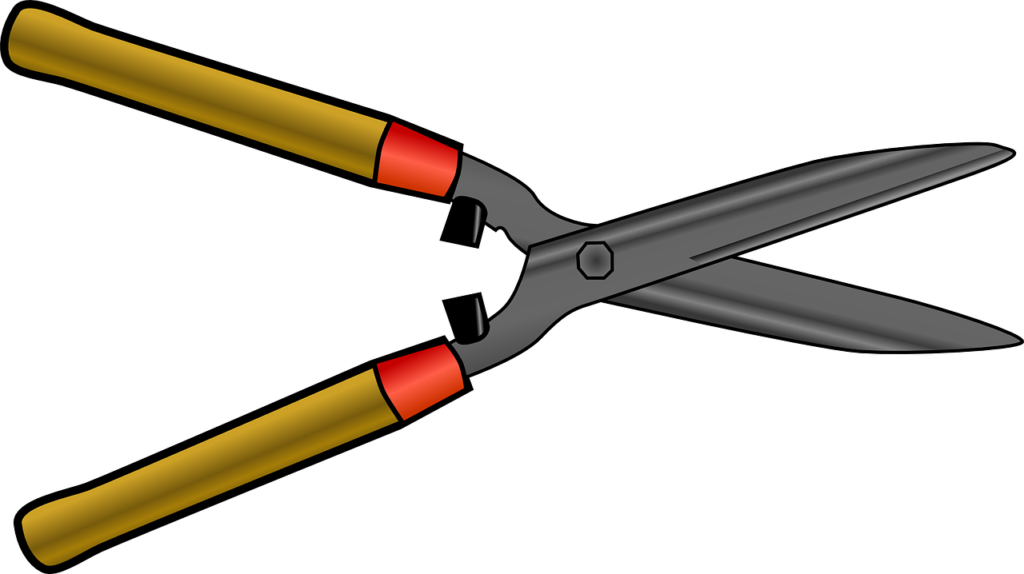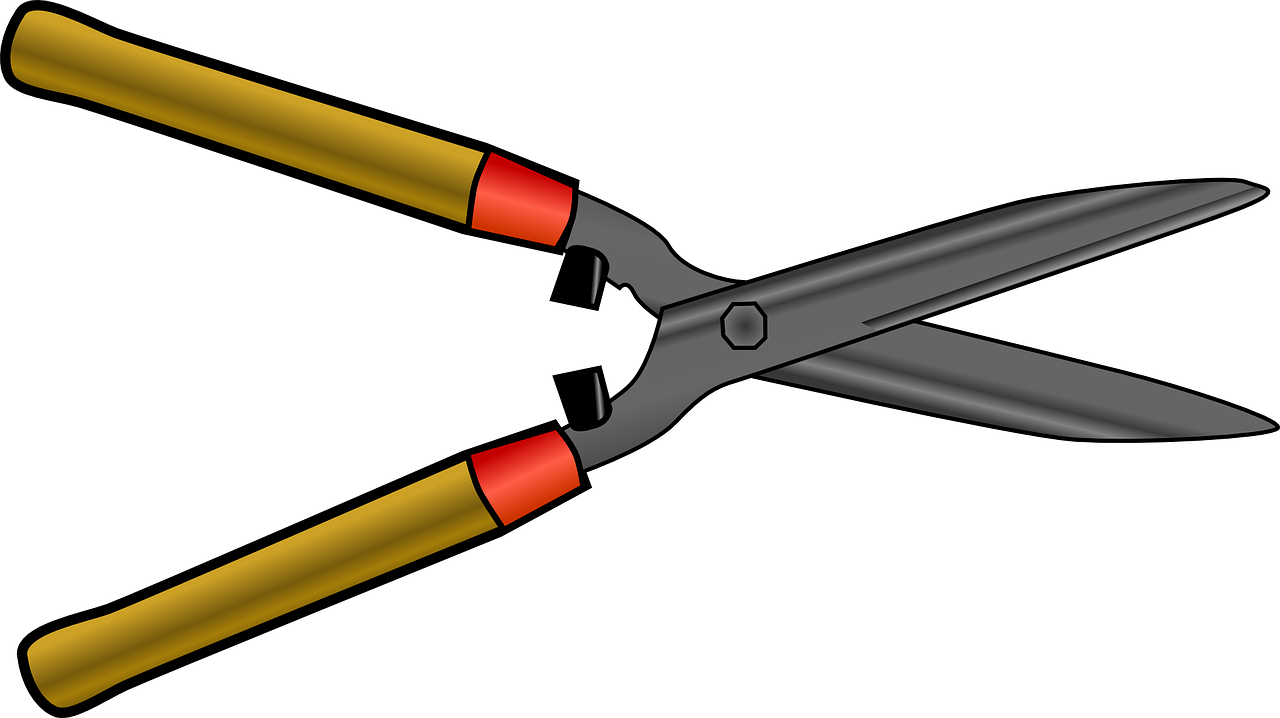Check Out Below Top 3 Robot Lawn Mower With Best Price & Review
Mowrator Remote Control Lawn Mower S1 4WD 56V18Ah, Multi-Functions RC Lawn Mower with 1.5-4.3 Inch Cutting Height 21 Inch Real Blade for 75% Slope(37°) with Mowing 1.12 Acres
$3,599.10 (as of 8 July 2025 02:20 GMT -04:00 - More infoProduct prices and availability are accurate as of the date/time indicated and are subject to change. Any price and availability information displayed on [relevant Amazon Site(s), as applicable] at the time of purchase will apply to the purchase of this product.)Husqvarna 420iQ Automower Robotic Mower, 1 Acre Mowing Capacity, Wire Free Robot Lawn Mower with Charging Station, RS1 EPOS Reference Station and Replacement Blades
$3,499.99 (as of 8 July 2025 02:20 GMT -04:00 - More infoProduct prices and availability are accurate as of the date/time indicated and are subject to change. Any price and availability information displayed on [relevant Amazon Site(s), as applicable] at the time of purchase will apply to the purchase of this product.)LawnMaster OcuMow™ Perimeter Wire Free Robot Lawn Mower Cuts Small Lawns 1000-2000 Square Feet with Optical Navigation, Obstacle Avoidance, Low Noise and No Go Function
$399.99 (as of 8 July 2025 02:20 GMT -04:00 - More infoProduct prices and availability are accurate as of the date/time indicated and are subject to change. Any price and availability information displayed on [relevant Amazon Site(s), as applicable] at the time of purchase will apply to the purchase of this product.)We are thrilled to present an insightful article on the future of lawn care, focusing specifically on the exciting trends in remote-controlled mower technology. In recent years, advancements in this field have revolutionized the way homeowners maintain their lawns, making the arduous task of mowing much more efficient and convenient. With the increasing demand for robotic solutions, we explore the latest developments and discuss how these innovative machines are transforming the landscape of lawn care. Join us on this journey as we explore the fascinating world of remote-controlled mower technology and glimpse into the future of lawn maintenance.

Heading 1: Autonomous Lawn Mowing
Subheading 1: The Rise of Robotic Lawn Mowers
As technology continues to advance, our lawns are also benefiting from the innovation. The rise of robotic lawn mowers has revolutionized the way we maintain our yards. Gone are the days of spending hours pushing a heavy mower under the scorching sun. With autonomous lawn mowers, we can sit back and relax while the machine does the work for us.
These robotic mowers are designed to navigate our lawns independently, using advanced sensors and smart algorithms. They move around our yards, cutting the grass evenly and efficiently, without any human intervention. With their sleek designs and quiet operation, these mowers have become a popular choice for homeowners looking for a convenient and hassle-free lawn care solution.
Subheading 2: Benefits of Autonomous Lawn Mowers
The adoption of autonomous lawn mowers comes with a range of benefits for both homeowners and the environment. Firstly, these machines save us valuable time and effort. With the ability to schedule their operation, we can program them to work while we are away or during the night, ensuring our lawns are always well-groomed without us lifting a finger.
Another advantage is their ability to navigate and mow uneven terrain. These mowers are equipped with advanced sensors that allow them to detect and adjust to changes in the landscape, resulting in a more even and precise cut. Additionally, their mulching capabilities help nourish the grass, promoting healthier growth.
Not only do these autonomous mowers save us time and promote healthier lawns, but they are also more environmentally friendly. Most robotic mowers are electrically powered, reducing our carbon footprint and contributing to a cleaner environment. Moreover, their quiet operation minimizes noise pollution and allows for peaceful enjoyment of our outdoor spaces.
Heading 2: Advances in Sensors and Navigation
Subheading 1: GPS Technology in Lawn Mowers
One of the key advancements in autonomous lawn mower technology is the integration of GPS (Global Positioning System). GPS allows these mowers to accurately navigate and mow our lawns by mapping out the area and creating virtual boundaries. With the help of GPS, the mowers can efficiently cover the entire lawn without crossing over into flower beds or other off-limits areas.
GPS technology also enables geofencing, a feature that allows us to set specific boundaries for the mower. This ensures that the mower operates only within the designated area, giving us peace of mind and eliminating the risk of damage to our property or neighboring lawns.
Subheading 2: Object Detection and Avoidance
To ensure the safety of our property and pets, autonomous mowers are equipped with advanced object detection and avoidance systems. These systems use a combination of sensors, such as ultrasound, infrared, and cameras, to detect obstacles in the mower’s path.
When an obstacle is detected, the mower adjusts its route to avoid collision. The sensors constantly monitor the surroundings, allowing the mower to navigate around objects including trees, rocks, and toys left on the lawn. This not only protects our property but also reduces the risk of injury to children or pets.
Subheading 3: Adaptive Navigation Systems
Adaptive navigation systems are another significant development in autonomous lawn mower technology. These systems allow the mowers to adapt to changes in the environment and adjust their mowing patterns accordingly. Whether it’s varying grass heights or different terrains, the adaptive navigation systems enable the mowers to maintain a consistent mowing quality throughout the entire lawn.
By continuously analyzing and making adjustments based on the conditions, these advanced navigation systems ensure that our lawns are always finely trimmed, regardless of any changes or challenges they may face.
Check Out Affordable RC Mowers On Sale!
Heading 3: Smart Features and Connectivity
Subheading 1: Remote Control and Scheduling
One of the key attractions of autonomous lawn mowers is their remote control and scheduling capabilities. Through a user-friendly mobile app or remote control, we can easily program the mower to start, stop, and adjust its mowing schedule. This allows us to set the mower to operate when it’s most convenient for us, such as when we’re at work or asleep.
With just a few taps on our smartphones, we can easily monitor the progress of the mower, change settings, and even receive notifications when the mowing task is completed.
Subheading 2: Integration with Smart Home Systems
In an increasingly interconnected world, autonomous lawn mowers are not left behind. They can now be seamlessly integrated into our smart home systems, allowing us to control them through voice commands or smart hub devices.
The integration with smart home systems enables us to include the autonomous mower in our overall home automation setup. We can easily incorporate it into our routines, schedules, and even link it with other smart devices, such as weather sensors or irrigation systems, to create a more efficient and synchronized lawn care experience.
Subheading 3: Mobile Apps and Voice Control
To further enhance the user experience, manufacturers of autonomous lawn mowers have developed intuitive mobile apps that provide us with full control over our mowers’ operations. Through these apps, we can access a wide range of features, including monitoring the mower’s progress, adjusting settings, creating mowing schedules, and even receiving notifications when the mower encounters any issues.
In addition to mobile apps, voice control has also become a popular feature in autonomous lawn mowers. By integrating with virtual assistants like Amazon Alexa or Google Assistant, we can simply give voice commands to start, stop, or adjust the mower’s settings, making lawn care easier and more convenient than ever before.
Heading 4: Environmentally Friendly Solutions
Subheading 1: Electric and Solar-Powered Mowers
As the world becomes increasingly aware of the importance of environmental sustainability, autonomous lawn mowers offer a greener alternative to traditional gas-powered mowers. Many of these mowers are powered by electricity, either through a corded connection or a rechargeable battery.
Electric-powered mowers eliminate emissions and reduce the dependency on fossil fuels. They provide a cleaner and quieter mowing experience, without compromising on performance or efficiency. Some manufacturers even offer solar-powered options, harnessing the power of the sun to keep our lawns looking their best.
Subheading 2: Reduced Noise and Emissions
Traditional gas-powered mowers are notorious for their noise pollution and emissions. Autonomous lawn mowers address these issues by significantly reducing noise levels, making them more pleasant for both users and neighbors. Additionally, with electric or solar-powered operation, there are no harmful emissions released into the air, contributing to better air quality and a healthier environment.
Subheading 3: Efficient Use of Resources
Autonomous mowers are designed with efficiency in mind, ensuring the optimum use of resources. With their ability to mow evenly and precisely, they prevent overcutting and unnecessary use of energy. Moreover, the mulching feature of these mowers eliminates the need for collecting and disposing of grass clippings, allowing the nutrients to return to the soil naturally, promoting healthier growth and reducing waste.

Heading 5: Efficient Maintenance and Precision Cutting
Subheading 1: Self-Adjusting Cutting Height
Maintaining the ideal cutting height is crucial for the health and appearance of our lawns. Many autonomous mowers are equipped with self-adjusting cutting height features that ensure consistent and precise cutting. These mowers can automatically adjust their cutting blades to accommodate changes in grass growth, resulting in a perfectly manicured lawn at all times.
Subheading 2: Avoiding Overlapping Patterns
One of the challenges of manual lawn mowing is overlapping patterns, which can lead to uneven grass growth and unsightly results. Autonomous mowers are programmed to navigate in efficient patterns that eliminate overlap, ensuring that every section of the lawn receives equal attention and a consistent cut.
By following calculated paths, these mowers maximize efficiency and minimize unnecessary mowing, resulting in a more time-saving and effective lawn care routine.
Subheading 3: Mulching and Grass Clipping Management
Autonomous mowers not only cut the grass but also handle the clippings efficiently. Many models are equipped with mulching capabilities, which shred the grass clippings into fine pieces and distribute them back onto the lawn. This process enriches the soil with valuable nutrients, reducing the need for additional fertilizers and promoting greener, healthier lawns.
With proper mulching and grass clipping management, these mowers significantly reduce waste and contribute to the overall health of our lawns.
Heading 6: Integration of Artificial Intelligence
Subheading 1: Machine Learning Algorithms
Artificial intelligence plays a significant role in the advancement of autonomous lawn mower technology. Machine learning algorithms enable these mowers to learn and adapt to the unique characteristics of our lawns. By continuously analyzing data, such as grass type, growth patterns, and user preferences, these algorithms optimize the mowing process to deliver the best results.
Over time, the mower’s performance improves as it gathers more data and adjusts its mowing techniques to achieve greater efficiency and precision.
Subheading 2: Predictive Maintenance
Maintenance is an important aspect of the longevity and performance of any machinery. Autonomous lawn mowers are equipped with predictive maintenance features that analyze the mower’s condition and provide notifications when maintenance or servicing is required.
These predictive maintenance systems monitor vital components, such as the cutting blade, sensors, and batteries, to ensure optimal performance. By detecting potential issues early on, these systems help us avoid major breakdowns and increase the overall lifespan of the mower.
Subheading 3: Enhanced Performance Optimization
The integration of artificial intelligence also allows for enhanced performance optimization in autonomous lawn mowers. With the ability to analyze and process data in real-time, these mowers can make adjustments on the go to maximize efficiency and deliver superior mowing results.
Whether it’s variation in grass thickness or changes in the terrain, the mower can adapt its mowing techniques to achieve the best possible outcome. This level of performance optimization ensures that our lawns receive the care they need, resulting in healthier, greener spaces for us to enjoy.

Heading 7: Safety and Security Features
Subheading 1: Anti-Theft Systems
To protect our investment in an autonomous lawn mower, manufacturers have implemented various anti-theft systems. These systems include PIN code protection, alarms, and GPS tracking capabilities. They act as effective deterrents against theft and provide us with peace of mind, knowing that our mower is secured even when unattended.
Subheading 2: Emergency Shutdown Mechanisms
Safety is a top priority when it comes to autonomous lawn mowers. These mowers are equipped with emergency shutdown mechanisms that instantly halt their operation in case of any unexpected events, such as the presence of a person or a pet in the mowing area.
These mechanisms ensure the immediate safety of everyone around the mower and minimize the risk of accidents or injuries. Additionally, they provide us with the confidence to let the mower operate autonomously without constant supervision.
Subheading 3: Safety Sensors and Obstacle Detection
Autonomous mowers feature advanced safety sensors and obstacle detection systems to prevent collisions and accidents. These sensors continuously scan the surroundings, detecting any potential obstacles in the mower’s path.
When an obstacle is detected, the mower’s navigation system adjusts its route to avoid collision. These safety features not only protect our property but also ensure the well-being of everyone, including children and pets, by minimizing the risk of accidents during lawn care.
Heading 8: Cost-Effectiveness and Affordability
Subheading 1: Decreasing Costs of Remote-Controlled Mowers
While autonomous lawn mowers were initially seen as high-end luxury items, their costs have been decreasing over time. As more manufacturers enter the market and technological advancements improve efficiency, prices have become more affordable for many homeowners.
The decreasing costs of remote-controlled mowers allow more individuals to enjoy the benefits of autonomous lawn care without breaking the bank, making them a practical and economical long-term investment.
Subheading 2: Comparison with Traditional Lawn Care Services
When considering the cost-effectiveness of autonomous lawn mowers, it’s important to compare them with traditional lawn care services. Hiring professionals to maintain our lawns can be expensive, especially when considering ongoing maintenance costs.
Autonomous mowers provide a cost-effective alternative, eliminating the need for recurring expenses associated with traditional lawn care services. By owning a robotic mower, we have full control over when and how our lawns are mowed, ultimately saving us money in the long run.
Heading 9: Market Trends and Consumer Adoption
Subheading 1: Increasing Market Demand for Remote-Controlled Mowers
As the convenience and benefits of autonomous lawn mowers become more widely known, there has been a significant increase in market demand. Homeowners are recognizing the value of these innovative machines, and the market has responded by offering a wide range of models to suit different preferences and budgets.
With the rising popularity of smart home technology and the desire for more efficient and time-saving solutions, the demand for remote-controlled mowers is projected to continue to grow in the coming years.
Subheading 2: Factors Influencing Consumer Adoption
Several factors contribute to the increasing adoption of autonomous lawn mowers by consumers. One major driving force is the desire for a more convenient and effortless lawn care experience. Autonomous mowers provide the convenience of hands-off operation, allowing homeowners to dedicate their time and energy to other activities.
Additionally, the environmental benefits and cost-effectiveness of these mowers make them an attractive choice for those seeking sustainable and economical lawn care solutions. The integration of smart features and connectivity appeals to tech-savvy individuals who value the convenience and integration with their overall smart home setup.
Ultimately, the combination of these factors, along with the continuous advancements in technology, fuels the growing adoption of autonomous lawn mowers in the consumer market.
Heading 10: Future Challenges and Innovations
Subheading 1: Battery Life and Charging Technology
One of the challenges currently faced by autonomous lawn mowers is the limited battery life. While advancements have been made in battery technology, longer-lasting batteries and more efficient charging methods are still areas of ongoing research and development.
Future innovations in battery life and charging technology will enable autonomous mowers to operate for longer periods without interruption, further enhancing their convenience and practicality.
Subheading 2: Handling Different Terrain and Obstacles
As autonomous lawn mowers become more widespread, they will have to face various types of terrain and overcome obstacles specific to each lawn. Innovations in navigation systems and sensors will be crucial in enabling these mowers to handle diverse landscapes and identify and navigate around different obstacles effectively.
Continuous improvements in these areas will ensure that autonomous lawn mowers are adaptable and versatile, providing consistent and efficient lawn care regardless of the challenges posed by the environment.
Subheading 3: Integration with Smart City Infrastructure
Looking ahead, the integration of autonomous lawn mowers with smart city infrastructure presents an exciting opportunity for further innovation. As cities become smarter and more interconnected, autonomous mowers can potentially tap into data sources such as weather sensors, irrigation systems, and available energy resources.
By leveraging this data, the mowers can optimize their operation schedules, target specific areas requiring more attention, and adjust settings for more sustainable and efficient lawn care routines. This integration could lead to an even more precise and eco-friendly future for autonomous lawn mowing.
In conclusion, the future of lawn care is undoubtedly heading towards a more autonomous and technologically advanced direction. Robotic lawn mowers have revolutionized the way we maintain our lawns, with benefits ranging from time and effort savings to environmental sustainability. Advancements in sensors, navigation, smart features, and artificial intelligence have contributed to the development of more efficient, precise, and user-friendly autonomous mowers.
Furthermore, safety and security features ensure worry-free operation, while cost-effectiveness and affordability make them a viable and attractive option for homeowners. As market demand continues to rise, manufacturers are constantly innovating to address future challenges such as battery life, terrain handling, and integration with smart city infrastructure.
With these advancements, we can look forward to a future where lawn care is effortless, environmentally friendly, and seamlessly integrated into our smart homes and cities. The autonomous lawn mower has truly transformed the way we maintain our outdoor spaces, making the chore of mowing the lawn a thing of the past.
Check Out Top Budget RC Mowers!
Check Out Below Top 3 Robot Lawn Mower With Best Price & Review







